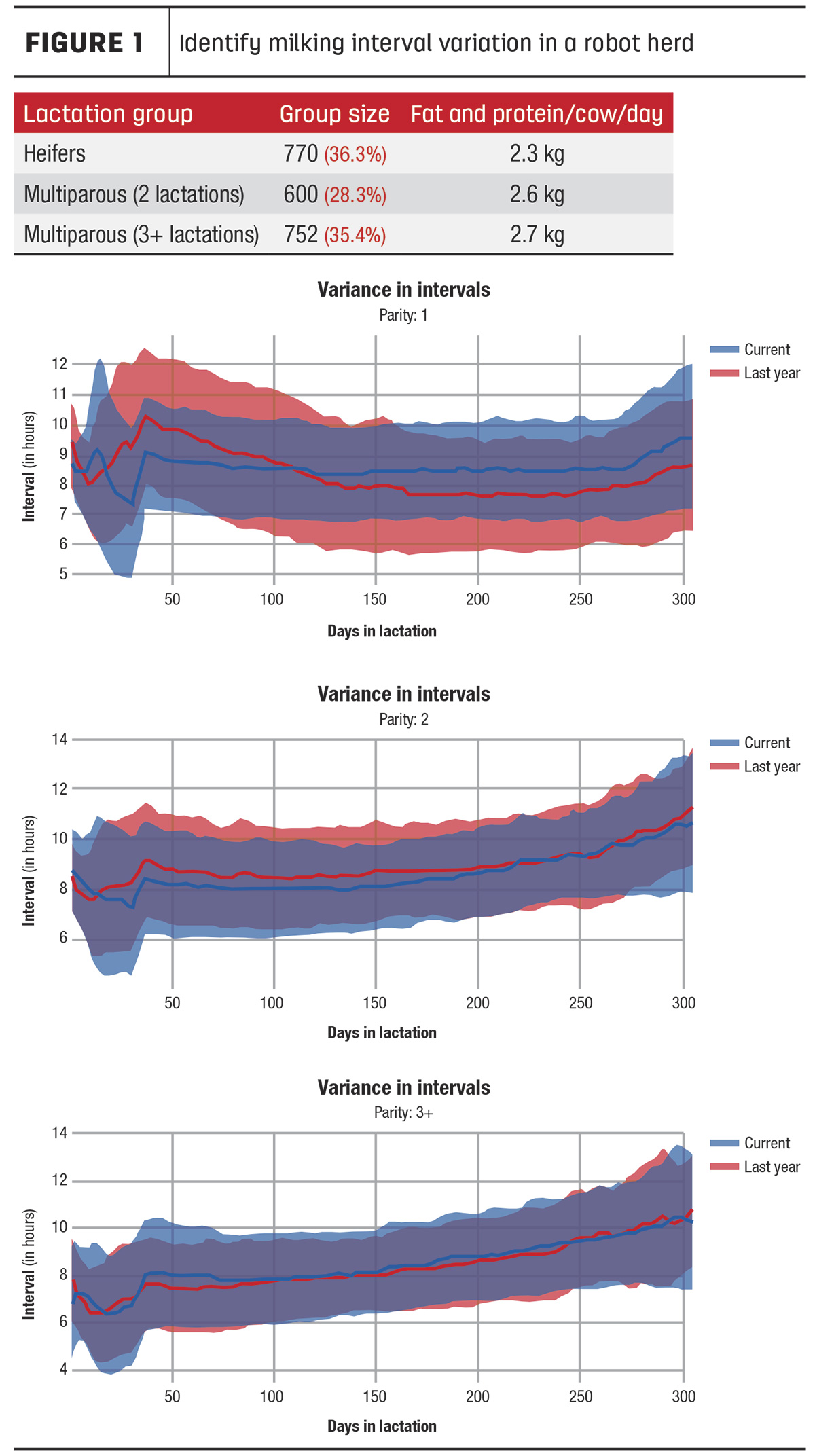There is no doubt that robotic dairy systems have revolutionized the dairy industry since their commercial introduction nearly 30 years ago. Producers who were early adopters of the technology found themselves with the new luxury of being able to redirect their time away from daily tasks like milking and feed delivery, to the overall management of their operations and understanding the specific production and health metrics of individual cows in their herd.
Part of successful management in a robotic dairy is developing reproduction programs to optimize the genetic potential of cows that perform best in milking robots. This optimization is facilitated primarily by using the oceans of data generated by robotic milking systems (which in some cases are specific down to the performance of the individual quarter) to guide reproduction decisions. To determine which cows are genetically predisposed to be high performers in robots, it is important to understand the dynamic interaction between cow and equipment.
In truth, a cow in a robot facility is not much different than a cow in a conventional barn. Regardless of which type of milk harvesting system, every dairy producer wants cows that calve easily, eat aggressively, walk confidently, milk bountifully and breed back quickly. How you get them to do that is really in the hands of the dairy producer.
Many dairy producers using automated milking systems focus on box time (time spent in the milking robot) as a key indicator of performance – and indeed, it is an important factor in managing a robot herd. Box time is influenced by many factors: Does the cow enter and stand calmly? In other words, does she like the feed she is going to get from the robot or does she leave some behind? Has the milking process been a comfortable experience for her? Yes, pulsation and vacuum settings as well as liner choice affect box time. If it has been comfortable for her, she will stand calmly while being prepped and the robot arm will attach on its first attempt and the cow will milk evenly and quickly. She will exit the robot after the post-milking treatment and go about the rest of her day.
How does a cow become an ideal robot cow?
The purpose of this article is to identify the traits that make an ideal robot cow. I would like to shift it to a call-out to industry: Let’s define the personality traits that impact feeding and milking behaviors in robot herds.
There is one important behavior trait that a robot cow possesses: She knows how to get there.
Figure 1 identifies milking interval variation in a robot herd. All parity groups are fed the same PMR. Parity 1 group has a feed table established based on production level, and Parity 2 and Parity 3+ use the same feed table, which is based on production levels as well. Cows in all groups are managed the same.

We can clearly see a large degree in variation of milking visits in first-lactation animals and the variation decreases, but is not eliminated, over time.
Behavioral traits in animals are often on display during times of stress. Automated milking facilities, by design and management opportunity, have reduced the most common stressors to dairy cows: human interaction, which is limited to short periods of time and cows are allowed to remain in their pen; and competition for feed access which is decreased by the natural social order of a pen or by the use of a mixing and feeding robot.
So what makes a cow more fearful or more social? I’m hopeful more research can be performed to identify the personality traits that affect behavior in dairy cattle and those traits become included in our indexing systems.
It is important to remember the goal in robotic milking is not to milk as fast as possible. Rather, the goal is to ensure a complete milking that has been performed as efficiently, cleanly and gently as possible and the robot performs this task the same way, every single time. This helps balance the need of the cow to be milked with the need of the machine to harvest milk from the rest of the herd. With those two considerations balanced, a producer can get the most value out of their robot and maximize the cow’s genetic potential.









